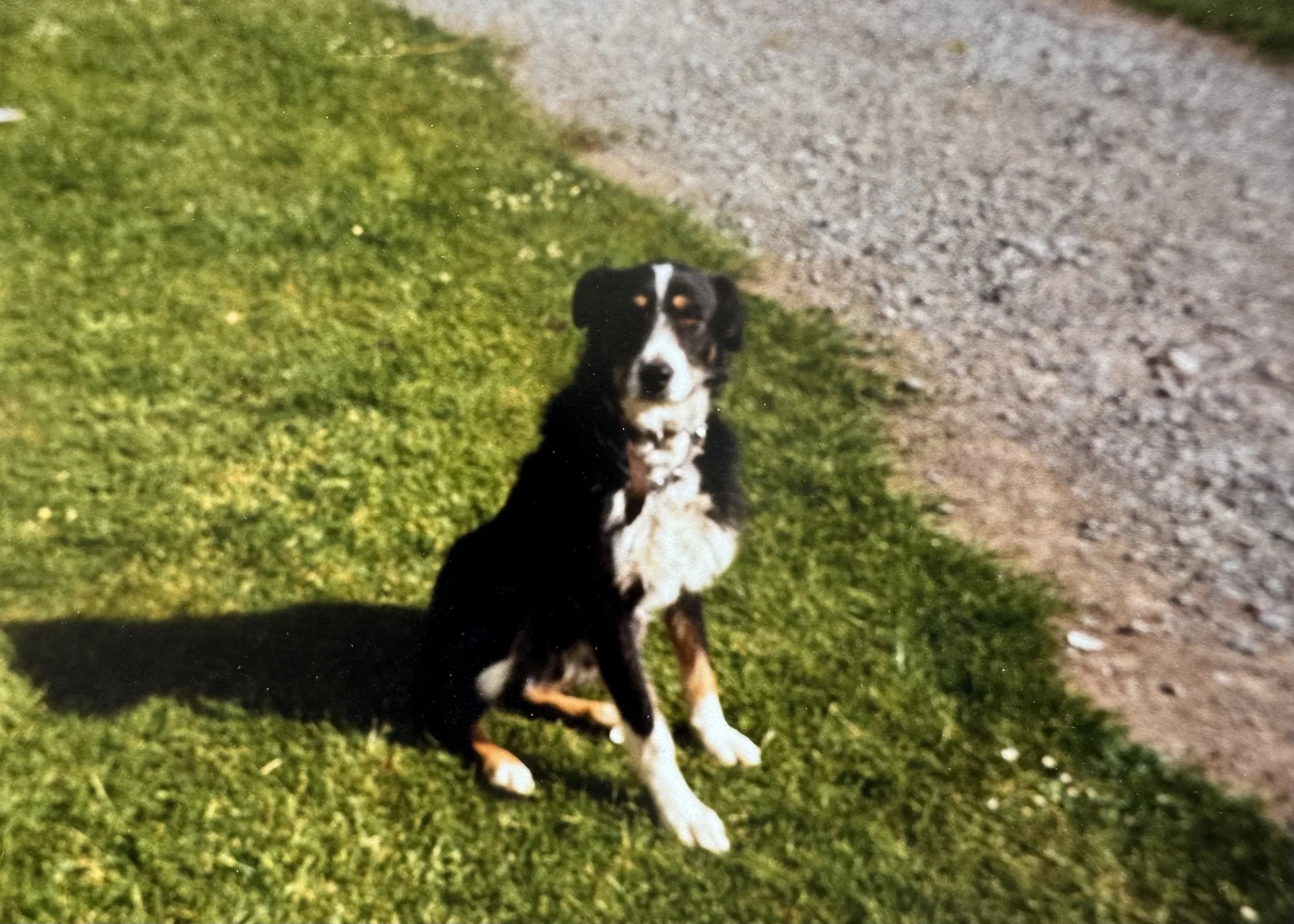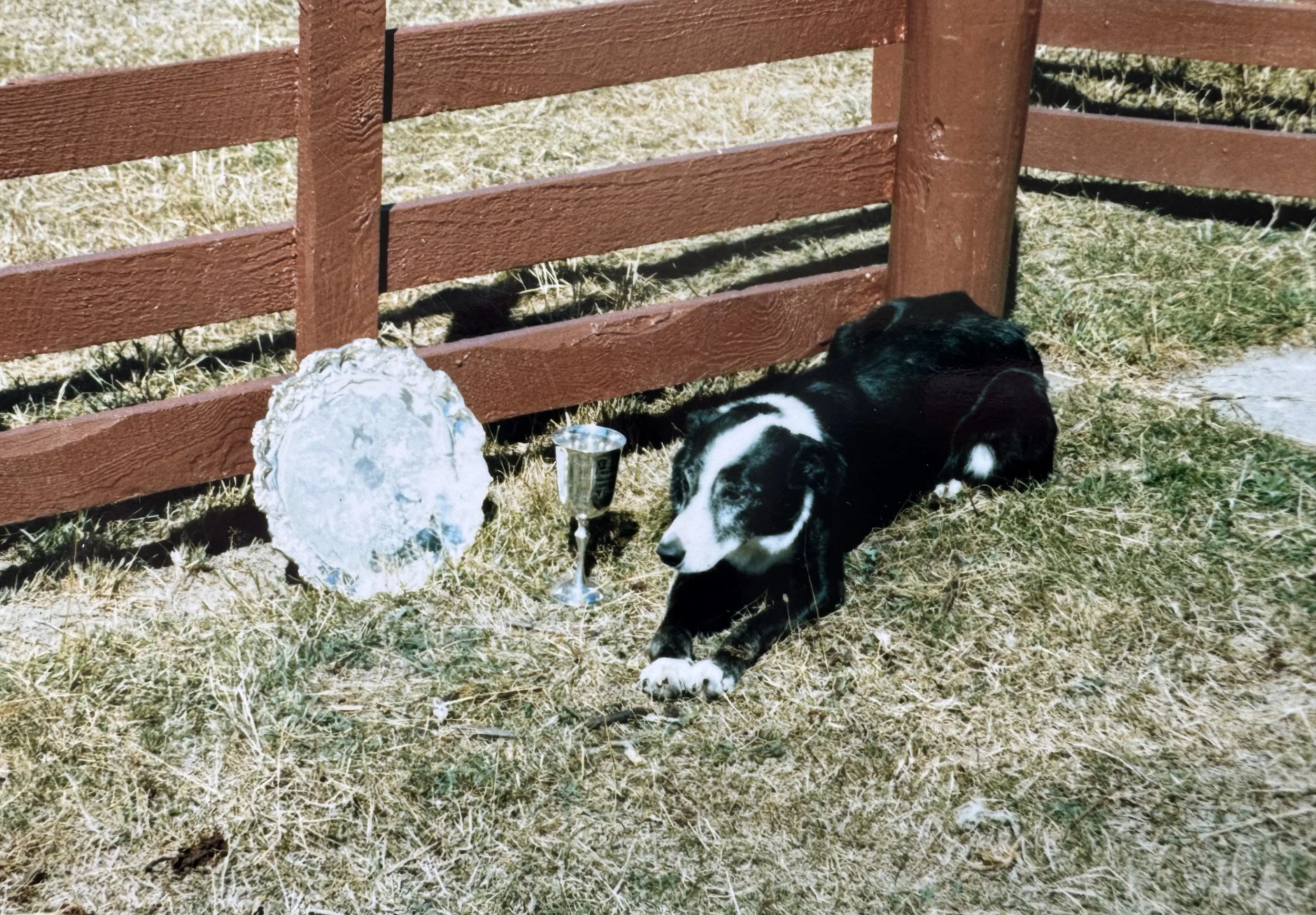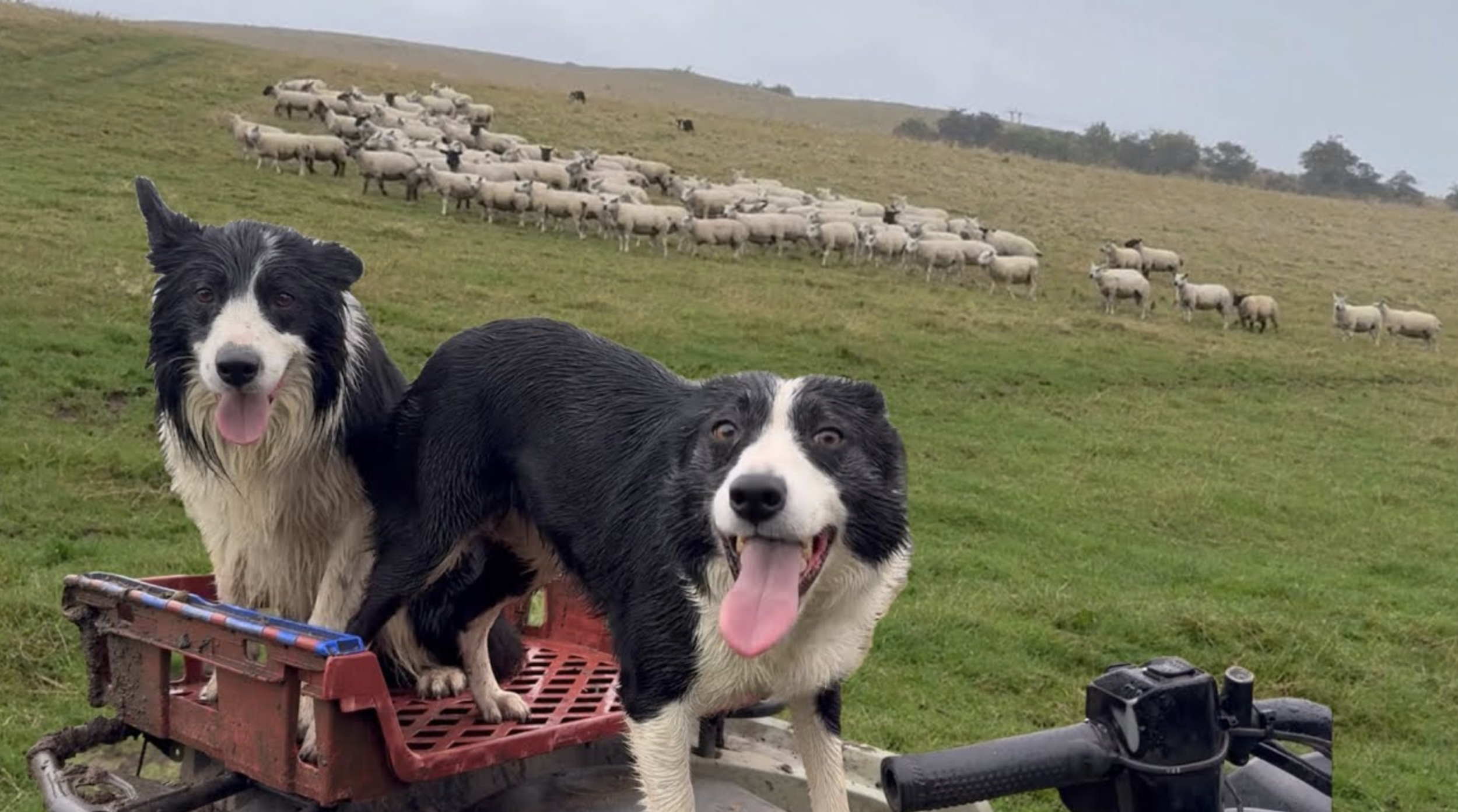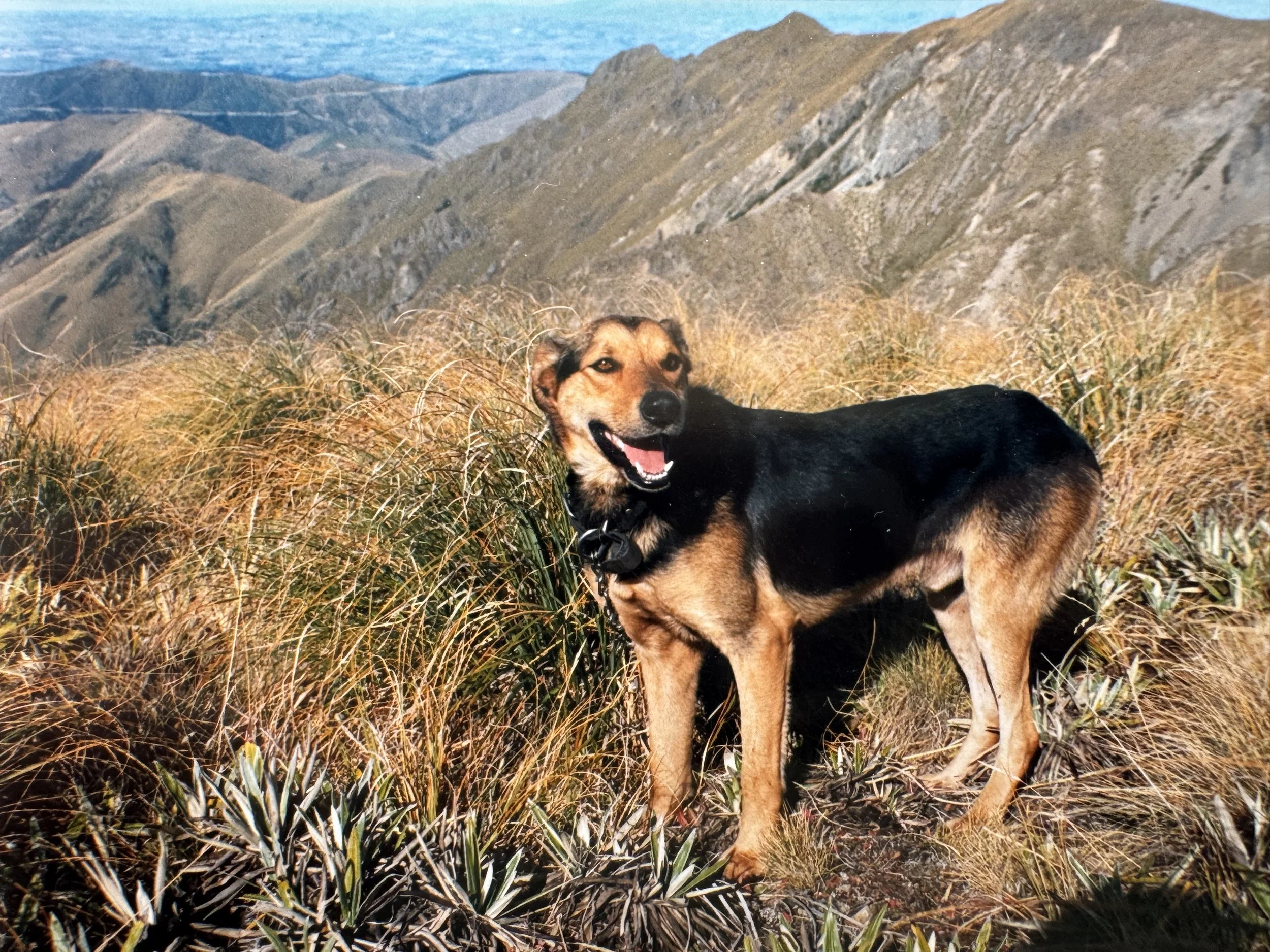The Shepherd’s Dogs
One of the first dogs I ever owned was a scrapper called Mac. It was November 1981. I was a green new-chum shepherd at Grampians, still figuring out what wayleggo meant. Mac fancied himself as a bit of a fighter; he thought he could take on anything on four legs. Unfortunately, his career in the canine fight game was short-lived.
One afternoon, he decided to pick a fight with Storm, Stuart Falconer’s big black-and-tan huntaway. Storm wasn’t just bigger; he was older, meaner, and knew exactly what he was doing. The outcome was about as predictable as a mutton race. Mac went in full of bark and bluster and came out with a nasty hole in his head.
Because he couldn’t reach it to lick, the wound festered and swelled until he looked like he was growing a second skull. The other shepherds, never short of wit or cruelty, christened him “Pussnut.” It stuck. For years, that name followed him across the hills like an echo. But Mac was a tough old boy. He recovered, scar and all, and from then on he picked his battles more carefully: usually with sheep.
Mac…not a fighter.
That was my first real lesson in shepherding: every dog, no matter how brave, learns humility sooner or later. And in a way, that’s what makes them such extraordinary companions.
For as long as shepherds have walked the hills, dogs have walked beside them: partners in patience, courage, and the occasional foolishness. Their history stretches back millennia, to when early herders first noticed that the wolves hanging around the campfires could be persuaded to work for a living. From that uneasy truce came the most significant working partnership in history: man and dog, mind and instinct, whistle and bark.
Every shepherd knows the feeling of watching a good dog at work—the way it moves with quiet intent, crouched low, reading both sheep and master. There’s no need for words. A whistle, a glance, and the job’s done.
Jill, my heading dog, with trophies that she won at the Burke’s Pass Dog Trials, 1987.
I’ve had many dogs since Mac, each with their quirks, tempers, and triumphs. Some barked too much, some thought too much, and a few, like Mac, mistook bravado for brains. But every one of them shared the same heartbeat—the same devotion to the job, the same bond that has tied shepherds and dogs together since before the first fence was built.
The truth is, shepherding without dogs would be like fishing without water. They make the work possible, and more than that, they make it worthwhile. They remind you that intelligence comes in all shapes: sometimes with four legs, a cold nose, and a ridiculous nickname you’ll never live down.
🐑🐑🐑🐑🐑🐑🐑
In every shepherd’s story, there are dogs. Faithful, cunning, and uncomplaining, the sheepdog has been part of the shepherd’s life for thousands of years; long before crooks and quad bikes, before fences, before plastic whistles and GPS.
Archaeologists have found the bones of herding dogs beside their masters in Neolithic graves, their remains suggesting a partnership already ancient by the time the first flocks grazed the highlands of Britain. From the Middle East to Mongolia, from the Pyrenees to New Zealand’s Mackenzie Country, the pattern repeats: shepherds and dogs, side by side, reading each other’s minds in the language of work.
A good dog is more than a helper. They are an extension of the shepherd’s will: seeing what their master cannot, moving with an intelligence that feels half instinct, half intuition. Together they form a single working mind, divided only by distance and whistle.
Border Collies, Wales.
The bond between shepherd and dog is unlike any other. It’s forged in weather and work; long days on the hill or in the desert, wet and wind-blown, hot and thirsty, where a nod or a glance says more than a dozen words. There’s pride in a well-cast dog, in the way it circles the mob with that low, wolfish run, or crouches, eyes locked, until the sheep turn and yield.
Across the centuries, countless breeds have emerged from this shared labour: the wiry little Welsh Collie, the lithe Bearded Collie of the Highlands; the stalwart Huntaway of New Zealand, bred not for silence and stealth but for sound, a booming bark that moves thousands. In Andalusia, the Perro de Agua guards flocks against wolves; in Turkey, Kangals stand guard beneath the stars; in the Atlas Mountains of Morocco, the Aidi keeps the flock safe from jackals; and on the steppes of Mongolia, the great Bankhar dog sleeps beside the herder’s yurt, ever watchful.
Kangal sheepdogs, Turkey.
Yet no matter their shape or voice, they carry the same inheritance: loyalty, endurance, and the quiet joy of purpose. Every shepherd has a dog story. Dogs who saved a drifting mob in the fog, or brought a runaway ewe down from the cliffs of Snowdonia. Dogs who outsmarted belligerent rams on the Canterbury Plains, dodged hooves on the red soils of Andalusia, and worked until they could barely stand on the peaks overlooking the Black Sea. Dogs who refused to be left behind in the dust of the Outback, or in the snowfields of the Caucasus.
These stories are the truest measure of a shepherd’s life. Because behind every tally, every muster, every long droving route, every hot day in the yards, every desert morning, every campfire on the Mongolian steppe, every snowbound night in the Caucasus, every wind-swept hill in Wales, every dawn call to prayer echoing across the deserts of Jordan, and every thunderstorm rolling over the plains of Central Queensland, a dog is watching, waiting, ready to work again.
Bounce, Four Peaks Station, 1994.




